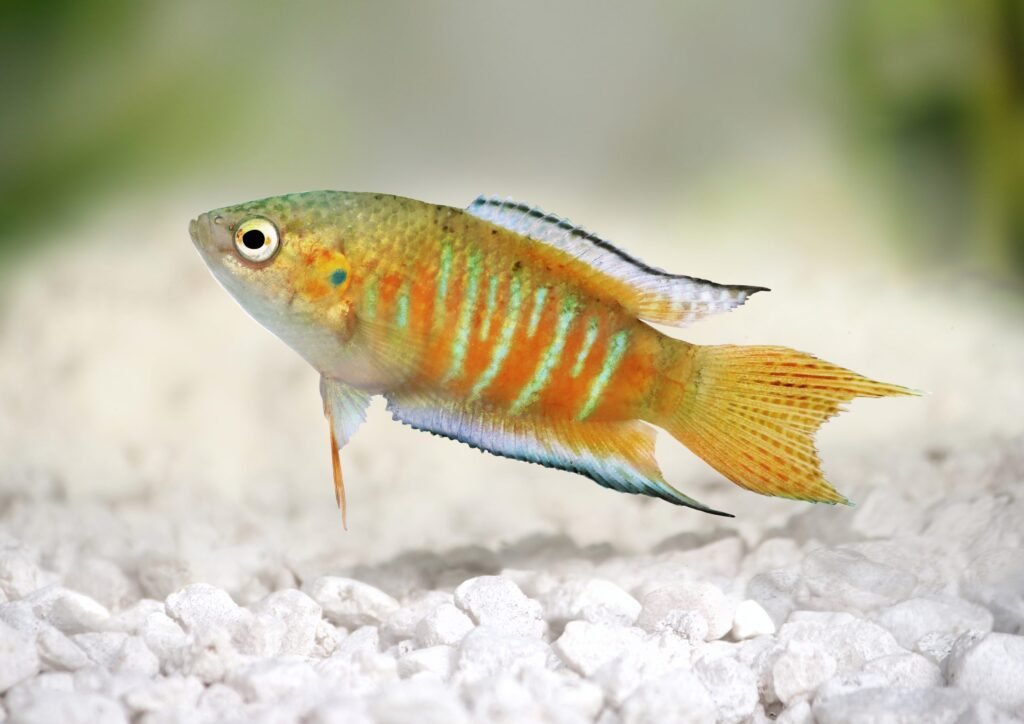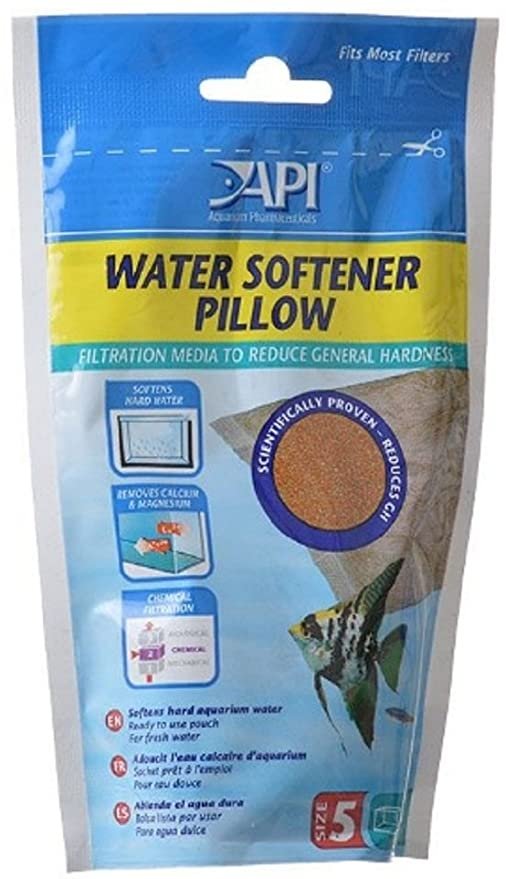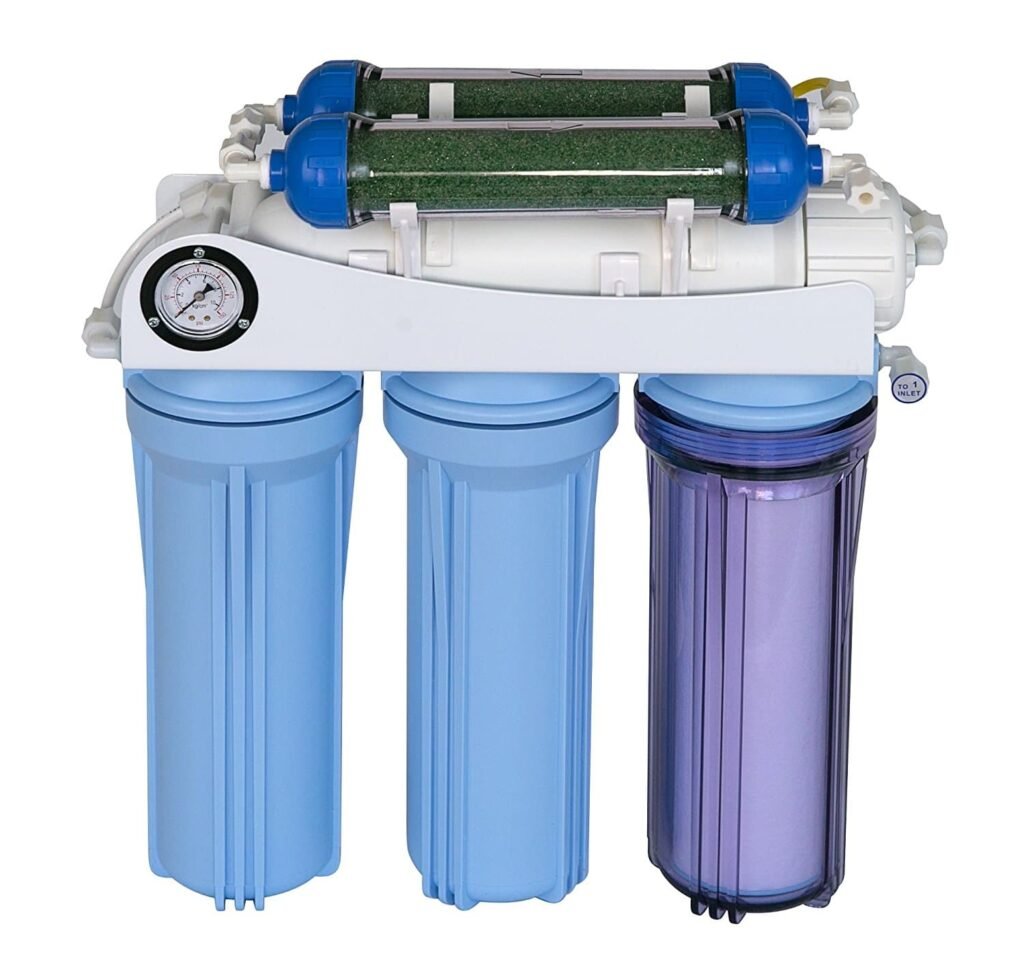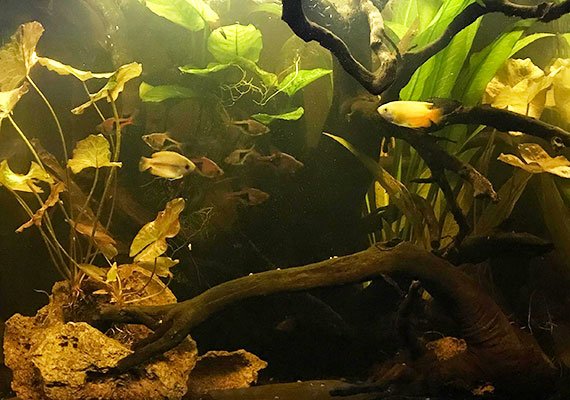An aquarium can contain fish and invertebrates that need soft water to survive. Unfortunately, some areas receive hard water from the supply network; this water contains minerals potentially threatening soft water animals and plants. If an aquarium needs softer water to make it habitable, follow these steps to get better water performance – and see our best recommendations for soften aquarium water. so let’s get started on How to Soften Water Aquarium..
What is water hardness?
The higher the percentage of free minerals in the aquarium water, the harder it is. Amazonian waters can reach as little as 10 mg of salts per kilogram compared to African lakes with 300 or 600 mg. To keep our animals living well, we need to provide the ideal and specific water conditions for our fauna. Soft water fish can usually survive in harder waters. However, the possibility of breeding or spawning these fish is virtually impossible in hard water.
How to soften aquarium water
For some aquarists, the hardness of tap water can harm the aquarium’s inhabitants. The easiest ways to reduce aquarium resistance include using simple methods like Reverse Osmosis, Rainwater, Peat moss, Driftwood, and Water Softener Pillows are commonly used to soften water tanks. Each technique has disadvantages and features, meaning that not all of them can serve a specific use. Various methods for softening the water below need further practical study by the aquarist.

What you need to know to soften aquarium water
Hardness refers to the levels of calcium or magnesium found in water. Carbonate Hardness (KH) is the property that indicates the concentration of metal ions dissolved in water. Several fish species thrive in soft water. However, certain fish species do better in hard water. Remember that most fish species are bred in captivity and do not enter the wild, so they are more adapted to our tap water.
Softener Pillows
Water softeners pillows help remove salts such as calcium, magnesium, and contaminants such as heavy metals and lower pH. Hardness reduction occurs relatively quickly, with effects seen within 24 to 48 hours. It works by exchanging magnesium and calcium ions for other ions, usually potassium and sodium.

Distilled Water and Demineralized Water
Distilled water has a relatively low mineral content – close to 0. Distilled water can be mixed with tap water to reach the desired hardness level. Distilled water can be purchased for relatively low prices.
Reverse Osmosis Water
Reverse osmosis is when minerals are removed from water through semi-permeable membranes. A reverse osmosis system pays off for large or saltwater aquariums despite its high cost.

Catappa leaves
The leaves of the Terminalia catappa plant – also known as Indian almonds – are also used to release humic acids and tannins that will soften aquarium water.

How can I tell if my aquarium water is hard or soft?
It is challenging to differentiate soft water from normal and hard water; the method used in aquarium hobby involves using proper tests for aquariums. If you contact your city’s water supply authority, they can provide you with information about the hardness of available water. Online maps also offer clues as to whether the water you encounter is hard or soft.
Carbonate Hardness (KH) & (PH)
Carbonates Hardness (KH) measure of carbonates and bicarbonates. The presence of carbonated compounds may affect water buffers. The higher the KHs, the lesser the probability of pH fluctuation. For comparison, a low KH level increases the chance of harmful fluctuation parameters waves at the fish tank. The two are closely tied — modifications on KH could negatively affect PH.
General Hardness (GH)
Calcium- magnesium is incorporated; the dissolved mineral content increases. Some fish species, especially some tropical fish, will experience hardiness problems in waters in an exceedingly low percentage. This exact figure may differ for some species.
Tell me the best GH (general hardness) for an aquarium?
This requirement differs for some specific species and types of tanks. Research beforehand which animals you want to keep, then find the perfect GH to suit your aquatic animals.
How is water hardness measured?
The good news for many chemists is that the technology also helps improve water hardness. Hardness can be measured based on the electrical characteristics of the water and measured from a probe in the aquarium water or colorimetric tests. These devices provide a direct hardness value expressed in degrees of hardness for any unit (DEH). At the standard DGH level, CaCO levels are 10 mL to 1 Mpl, equivalent to 17.85 ppm.
How To Test Water Hardness In Aquarium Water
The easiest way to test water hardness is to use an aquarium test kit. According to your test results, your water can be one of two types.
How to test Alakalinity or Carbonate Hardness (KH) in the aquarium water?
Alkalinity or carbonate hardness is measured using carbonate tests. Specifically, acidity in aquaculture can be attributed to fluctuating water pH. Higher KH readings indicate more water resilience to pH changes, thus lessening sudden changes. On the other hand, lower KH means it is susceptible to more constant pH fluctuations. Use proper tests for aquariums to correctly gauge your KH and pH to keep the water parameters stable.
How to test General Hardness (GH) in the aquarium water?
Use water hardness tests in your aquarium water. The resulting aqueous solution is tested based on calcium and magnesium concentrations. Lower levels of GH (0 to 6 d) indicate soft water, and higher levels (greater than 9 to 12) indicate hard water.
How does water become hard?
Waters stream become harder (GH) and alkaline when they pass through rocky surfaces such as limestones. Even limestone deposits on surfaces could cause mineral concentrations to rise in water. For some aquariums, it’s challenging to get “aside with the situation.” Hence they have many problems getting this information. They will be a significant threat to fish, in particular softwater fish. Water General Hardness alkalinized by water is essential for detecting the level of hardness in that water. Use these guidelines to know the water hardness content inside your water.
What causes aquarium water hardness problems?
Every aquarist uses water in their aquarium, but there is no universal mineral composition for natural water. Oyster shell material can intentionally increase the water’s hardness in the system. Another reason for increased water hardness could be a chemical mixture or various limestone substrate-based compounds. The water hardness depends on the geology available at the water source, not the local water source in general. There are geographic differences between countries and regions, and there are no specific values for this.
How can I soften aquarium water naturally and chemically?
When you decide to soften your aquarium water, use the suggestions contained here. Depending on the state of the source water, it may be necessary to change its parameters. But we do our best thinking step by step. I recommend treating the aquarium water in a separate container for best results and less risk of making mistakes.
Tell me the best way to soften aquarium water?
Fish are unlikely to allow any flexibility about parameters such as water, salinity, or nitrate content. Fish may be suffering from distress or about to die when levels are below the comfort level for the species. The hardness of the water in ponds is an attribute for which many fish have become well-trained adaptors; captive-bred aquatic creatures can withstand closer hardness with water from our supply networks.
How to Soften Aquarium Water | Water hardness Softening Methods
To soften aquarium water, the process usually occurs slowly at a gradual rate. It is guaranteed that the fish will not have severe consequences from a clash of parameters, as it changes the chemistry of the water very quickly. Softening the water is more complex than ultimately raising the water’s hardness. Weekly tests will show the difference between KH, GH, or pH levels. Soften the tank water slowly.
Soften aquarium water hardness inside your tank
There are small mesh bags with different dimensions that meet the needs of your container size. Use the mesh bag to insert the peat moss tightly. Kh, GH, or pH should be tested regularly every 12 hours. Remove the moss bags when you reach the desired water parameters.

Peat Moss (Sphagnum)
Peat mosses are decaying, dried mosses that can be classified into several species with an inherent ability to soften and reduce water pH. Peat mosses for aquariums are available at pet markets. Peat mosses include tannins that make the water brown; if you don’t want the water in your aquarium to turn that color, boil the peat for approximately an hour until the peat loses its brown color. Another solution is to dip the peat in a bucket to remove some dye. Once the process is completed, it is possible, with three techniques, to use the method efficiently.
Peat Moss As A Substrate Layer
Using peat as a substrate to soften water hardness is not a bad idea. This peat moss is fluffy and light, allowing it to move with the movement of water, avoiding anaerobic layers. The addition of other compounds such as gravel and sand to the substrate provides a different granulometry, benefiting the passage of water and promoting bacterial growth. Peat moss may color the water column; for this not to happen, the peat must be cleaned and preferably boiled before going to the tank. However, there may be differences in their method of use, as in the case of raising annual killifish; this is its most popular use. The peat pile releases substances that neutralize the minerals and soften the water.
Peat moss filters
Peat moss inhibits water hardness by binding calcium and magnesium. It is also called chelation, which softens aquarium water through demineralization. Peat produces tannin and humic acids. Oxidative ions have a decrease in KH: the acid neutralizes the carbonates in the water. A mixture of tap water from our home with peat can help with this problem of high water hardness. You can place a layer of peat directly inside a filter system to soften aquarium water hardness.
Peat Moss Inside Aquarium Filter
Place a bag full of peat in the tray or separate portion for media in your filters. The operation of the process in this way of the bags follows the same precept mentioned above. In filters, you can also use small grainy peat moss grains that are pelletized, which helps the peat moss enter and stay in the mesh bags; this will help prevent the moss from blocking the passage of water.
Using Rainwater In The Aquarium
Rainwater offers you something that unfortunately cannot be found everywhere. If you live in any weatherproof location – rainwater is acceptable for this aquarium. The storage tanks will hold plenty of moisture throughout the wet seasons. It should contain fresh, sterile foods and other materials to absorb rainfall to avoid contamination. In this case, your water supply should consist of water and rain in the same proportion that ensures appropriate pH and DH concentrations. The water must be kept under the air in clean containers with lids.
Rainwater
Usually, the simple way to soften aquarium water with a simple process of using water collected from rain can be a success for any hobbyist. In all likelihood, you could use accumulated rain as an opportunity to monitor GH and KH levels. To adjust its hardness to optimal levels, you can mix rainwater with tap water. Rainwater must be collected following some safety procedures such as not collecting in areas close to industries and other factories; it is also not ideal for collecting rain in high pollution conditions, such as acid and toxic rain.
Using Distilled Water
If you have distilled water available, be aware that you can use it as aquarium water. Water distillation consists of pure water extracted as a result. Hot water to create liquid-vapor causes pure water vapor to condense to produce distilled water. The development of the distillation is pure water, which means that all dissolved minerals in the water have been removed during the distillation. The best way to use distilled water is to use it alongside tap water before adding it to tanks.
Driftwood
Driftwood reduces hardness in aquarium waters based on natural techniques. With a high tannin content, Malaysian floating wood provides good softness to the water. The tannins are released, in response, the water’s hardness decreases. Many people prefer tannin-producing leaves (such as Indian almond leaves) to reduce water hardness.
Water Softener Pillow
Softeners have a hardness reduction mechanism containing oxygen to replace calcium and magnesium and insoluble heavy metal ions. They must not adversely affect your fish or plants. Water softening equipment is the perfect solution for small tanks and often needs to be removed because of its sudden effectiveness. Please follow the product usage information, as the usage method differs from product to product. Softeners reduce salt deposits and carbonate hardness in the aquarium water in a short time.
Reverse Osmosis (RO/DI)
If the hardness problem persists, you might want to use an RO or DI unit. A RO/DI system passes the water through a membrane filter to remove dissolved minerals, metals, and such. RO water has neutral to zero parameters. Also, using some raw water and adding minerals can make your RO water very useful in different systems. Using RO, adjusting the carbonate hardness and pH in your aquarium will become much more manageable.
Will softening the aquarium water harm my fish?
Hard water can damage your fish pets, but lack of minerals can cause serious illnesses. Fish have different water requirements concerning the species and their habitat, so we must continually adjust the hardness to the perfect standard for their fauna to survive. If you have very hard water, reducing its hardness suddenly can cause severe damage to your fish. Lower the parameter slowly, with the help of tests and water changes; this way, your fish will be free from possible physiological shocks.
In conclusion
These aquarium water hardness adjustment options are helpful for tropical fish that need little or no amount of dissolved salts in the water. There are specific kits for measuring GH, Kh, and pH in aquariums that can also allow you to determine the status of parameters and assist in correcting the characteristics of the water in your tank. Use a buffer when using acidifying products to make water soft in tanks; in this way, the pH remains constant due to the buffering effect, preventing it from rapidly changing. Rapid acidification of ph or drop in hardness can harm animals and plants.
Conclusion
There are several ways to soften your aquarium water to get the optimal results you want. Reverse osmosis systems are ideal for large tanks, saltwater aquaria, or unique soft water animal tanks and are widely used by fish breeders. Remember that monitoring GH and KH levels should become a routine to check and correct the hardness of the water in your aquarium. Incorporate progressive changes in aquarium water hardness; always carry out corrections piecemeal, avoiding sudden parameter shocks.

